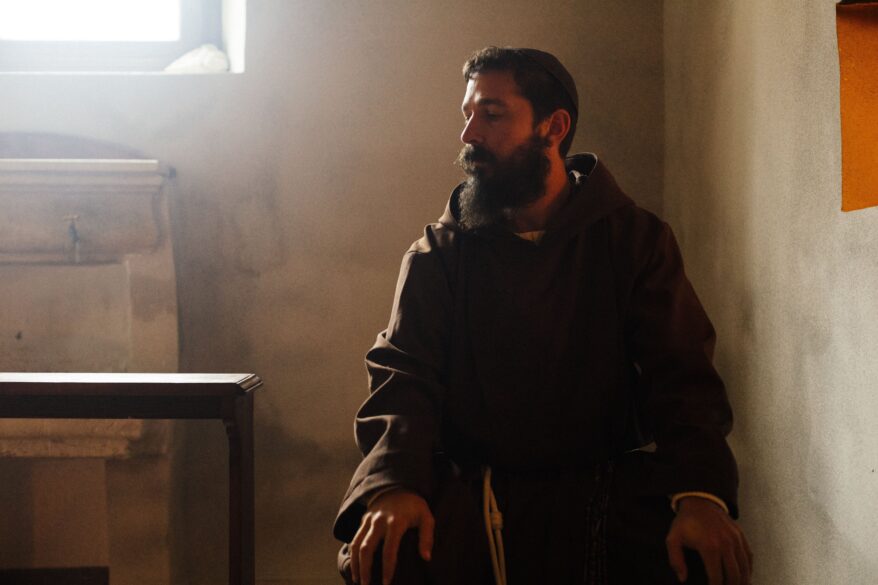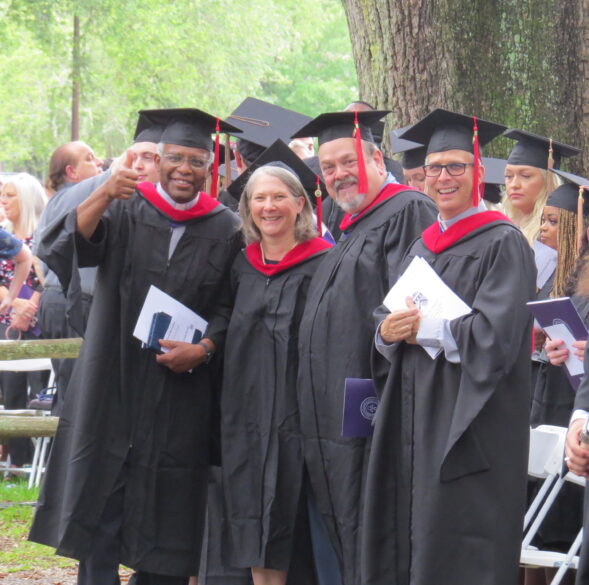By Joe Lee
MADISON – Almost 25 years ago, Ronnie Russell had a moment that some might call an epiphany.
“I’d been the director of corporate security for the McRae’s stores in Jackson since 1977. I made a comfortable living, but it was time to get off the merry-go-round,” said Russell, who just announced his retirement as band director after 19 years at St. Joseph Catholic School in Madison. “After I left, I did a lot of thinking. I figured half my life was over. What did I want to leave behind when I was gone?”
Russell grew up in Jackson and graduated from Wingfield High School in 1973 before earning a Bachelor of Music Education degree from Ole Miss.
“My first attraction to music was at Hillcrest Baptist Church near my home,” he said. “A musician who led the singing at a revival pulled out a trumpet and played hymns on it. I thought that was the coolest thing ever and knew what I wanted to do.”

By his late twenties, Russell and his music buddies had a regular Friday night big-band gig at the Capital Towers building in downtown Jackson. Still, his dream of teaching music wouldn’t come true until he was put in touch in 2004 with the late Bill Heller, the St. Joe principal at the time.
“He was looking to get the school band re-started,” Russell said. “I remember talking to him on the phone in the Clinton Walmart parking lot – he pretty much hired me sight unseen.
“Without Bill Heller, the St. Joe Fine Arts Building would not be there. As I go back and watch recordings of some of our old music programs, Bill would introduce me as ‘the answer to his prayers.’ He didn’t know it, but St. Joe was the answer to my prayers, too.”
Father Aaron Williams, ordained as a priest in 2018 and at St. Mary Basilica in Natchez since May 2022, graduated from St. Joe in 2010. His seventh-grade year coincided with Russell’s arrival.
“I was one of three students in my grade who learned the trumpet, and within our class we were able to play the three parts of musical pieces together,” Williams said. “Ronnie was always very encouraging, even if I doubted my own ability.”
“The band was so small when I started, it was referred to as more of a jazz ensemble,” said Cole Riley, a 2008 St. Joe graduate and now a dentist in Lake Charles, Louisiana. “I had played guitar for a few years but wasn’t formally trained. Mr. Russell really helped me with reading music notation, especially the rhythm parts and lead sheets that he would compose and hand-write for us.
“I was blown away by his devotion to us and musical knowledge. I had never heard of Tower of Power, Weather Report and Herbie Hancock until that point in my life.”
Riley added that while Russell was the kind of teacher that felt like a friend, there was no question that band members were expected to work hard and do things the right way. Those concepts were drilled into a much younger Ronnie Russell two generations ago.
“In one of my high school yearbooks, a history teacher wrote, ‘I wish you would worry a little more,’” Russell said. “I’d planned to be a professional musician – a rock and roll star – and the truth was that I was wasting my time in school. I was also fortunate to have a private teacher named Ralph Guthrie that was very blunt. I needed that honesty back then, and today I’m very old school. I don’t believe in coddling and participation trophies.”
Russell sought tirelessly to include everyone that wanted to contribute to the St. Joe band program, regardless of skill level, and that desire included working just as hard with students that struggled with social and communication skills.
“From being one of the earliest teachers to arrive in the morning to staying late arranging music for all the parts of the band, his dedication was unmatched,” said Kathryn Sckiets Blanchard, campus minister at St. Joe and a 2013 graduate. “I watched the band and the whole Fine Arts Department go from trailers by the lake to the brand-new Fine Arts Building, and I saw Mr. Russell move into the office he deserved.
“He once said that with the exception of his family, we were the most important people in his life.”
Russell continues to offer private instruction at First Baptist Church of Jackson and remains a crucial part of the annual Carols by Candlelight performances that pack the FBC sanctuary and are viewed by thousands on YouTube. He cherishes the opportunity to play with his grandson, Parker Thames, a rising junior at Clinton High School who plays first trumpet in the FBC Jackson orchestra.
“I never won anything when my students won — they did,” Russell said. “You give them the direction you think is best, and you applaud when they succeed. When they fail, you help them back up and say, ‘We’ll get them next time.’
“It starts with loving the kids. That’s what I feel for them.”





